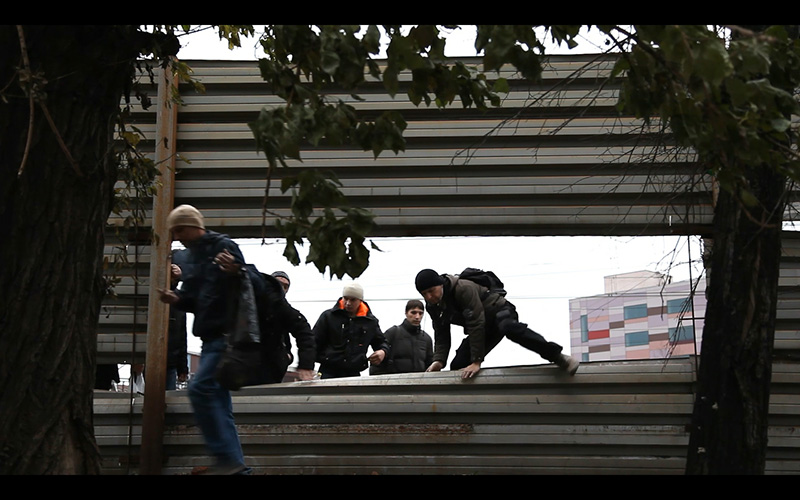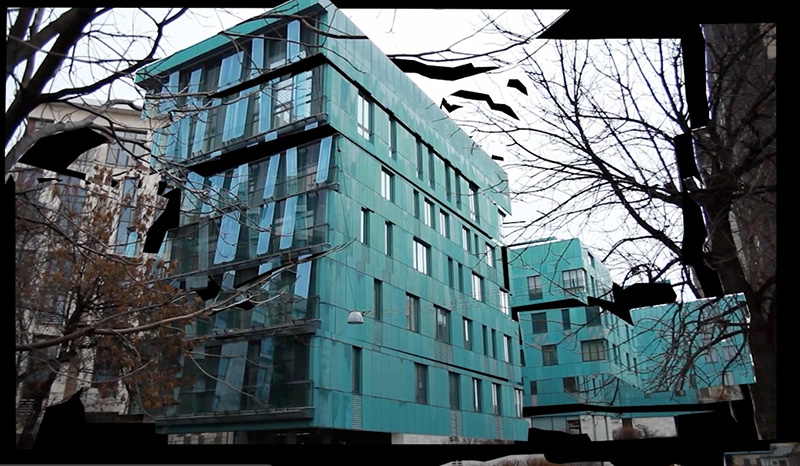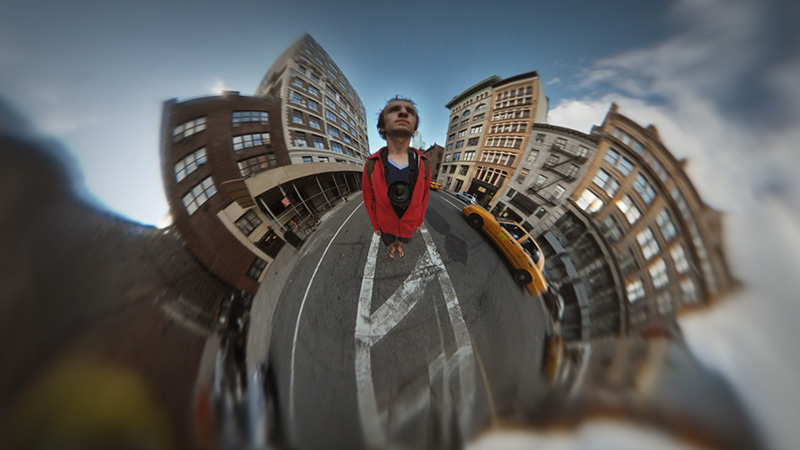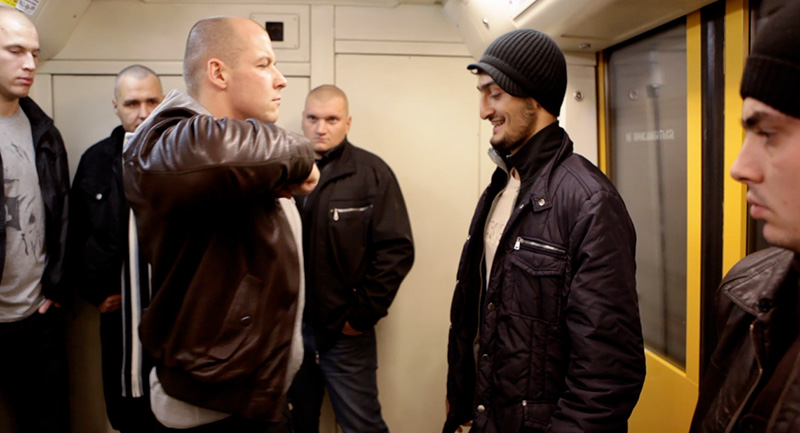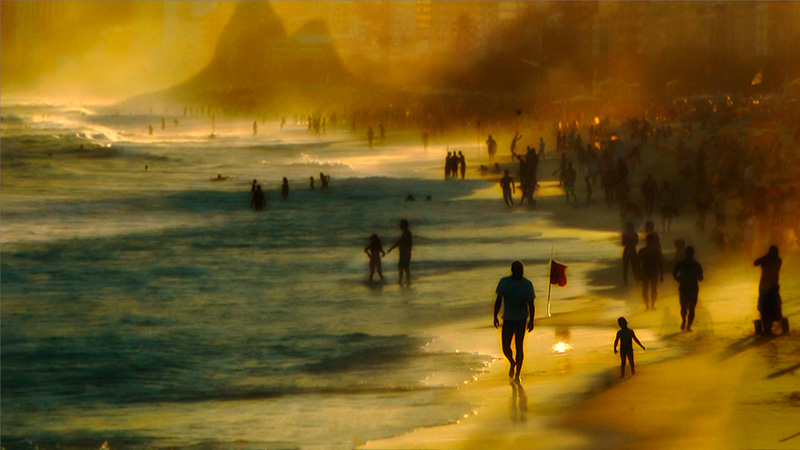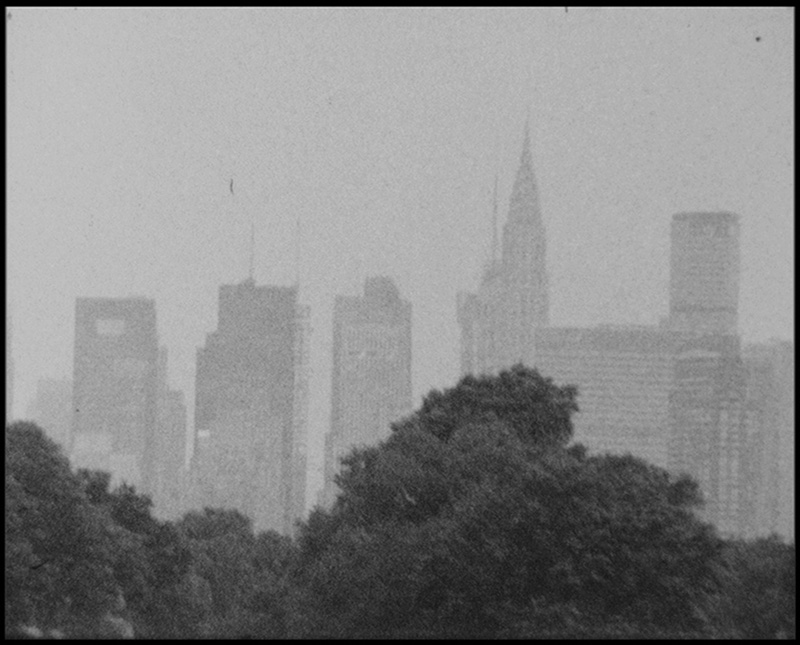“Cities in motion”
Curator Elena Rumyantseva
Oslo Screen Festival
Filmens Hus | Cinemateket (Lillebil)
9th of March 2014
The program features eight videos in various ways analyzing the urban environment we live in. Each of the authors treats the subject in his own way, chooses his own protagonists.
Elena Koptyaeva explores the transformation of the modern architectural environment, of the familiar urban landscape. Chernikova defragments the space, creating a kaleidoscope of the visual images. Francois Vogel continues the theme - in his work flexible time and architecture are woven together. In Nina Kurtela’s video performance she becomes the only constant character – witness of the rapid transformation around her. Roman Mokrov dispassionately fixes the unending impersonal stream of people, while Elena Gorbachova tells an nearly intimate stories of characters snatched out of the crowd.
The endless carousel of life, eternal motion, collision of the hectic pace of life in permanently transforming megalopolis and people, who make up its essence and are a reason for all these changes, this is a constant leitmotif of all works.
Program ends with Yan Ilyas’ Two Islands. It asks a question: What will be the result of all these transformations and how our future descendants will see us?
Endless Story, 6’44’’, 2011
Courtesy Triumph gallery
Every day Moscow takes in thousands and thousands of people, who come for work, study and leisure. They come to improve their lot, to improve their salaries, their minds, and their lives. Or just to look around, spend money in a shopping center, go to a movie. Essentially, a trip to Moscow is the road to happiness. Or the search for happiness. As we all know, the road to the top is a rocky one. If you ride Russian Railways' trains into Moscow from the suburbs, it's an expensive one too, and most people are forced to find a way to avoid that.
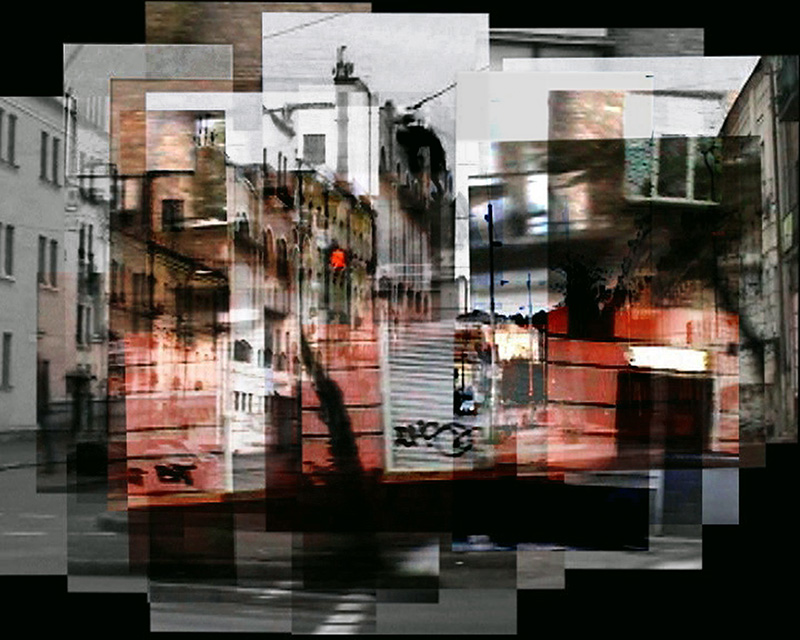 Marina Chernikova, Russia/The Netherlands
Marina Chernikova, Russia/The Netherlands
URBAN SURFING / Moscow, 5’00”, 2010
The ongoing project URBAN SURFING unites experimental videos and photo based on the investigations of the borders of psychological perception of the urban environment. The accelerated tempo of urban life and the development of new technologies have remodeled the experience of reality. They force us to extensive navigation through and allow virtual existence in different places simultaneously. Our physical, psychological and virtual spaces are continually crossing and overlapping, thus forming conglomerates of spaces, on which each of us surfs his own wave. This results in a fragmented and nonlinear perception of our existence and urban environment. Exploration of the possibilities of new media allows translating these phenomena in a physical dimension. Though photographic and video footage are the point of departure the aim is not to create a documentary, but to try to grasp the essence of individual experience.
Composition, 5’16”, 2012
The artist explores the space in order to find the initial structure, either uniting or dissociate the historical centre of Moscow. The inhomogeneity of the architecture of the chosen couples of buildings – from classicism to constructivism sets a new format of the vision of the city as a dissociate agglomeration. Inside the shot a space distortion of the original material takes place, while different layers combine and disintegrate into new forms. These transformations are realized due to a point of view of a constructed virtual camera, an objective optical system. But the space is reproduced with a mistake, a conscious non-fitment of layers, a fracture and discrepancy of proportions. This is a approach to work with the digital material, new cutting methods, based on the introduction of the third, imaginary dimension of the space of a flat picture.
Transformance, 8’15”, 2010
Documentation of durational performance took place in a space that has been reconstructed from an old warehouse into dance center in Wedding, Berlin. She was taking every working day around 200 portrait photos in transforming surrounding of construction site from exactly the same position, placing herself in the middle of the site.
Terrains glissants (Sliding Earths), 10’12’’, 2010
Distorted images, elastic time: "Sliding Earths" offers us a unique and poetic vision of Man on our planet. Between travel diary and performance, the film traces the wanderings of an individual guided by strange inner voices. From New York to Sao Paulo, from the French countryside to the Californian desert, he slides on a tiny yet varied world.
Subway, 4'30'', 2012
Moscow artist Elena Gorbacheva studies the life of the newcoming migrants that flock to the capital for work, bringing their own national traditions, customs and festivities. Although all that helps the newcomers to keep links to their roots, to the Motherland of their ancestors, Muscovites find it difficult at times to accept it. The artists depicts the essence of the conflict that took place for real and more than once in Moscow and has become a subject of debate in mass-media. In her work the artist decides to push the conflict to the extreme and acquaints the nationalists, who hate the migrants a priori, with the migrants from the North Caucasian republics. This is why — thinking about her work — the artists turns to the genre of mocumentary which allows her to take her audience away from the conventional stereotype thinking and to dust off the drowsiness of predictability from the plot and the conflict’s resolution. The author studies the allegedly impossible combination when the conflict is not to end in blood and victims, encouraging her audience to believe in the reality of such a scenario. The author does not hurry with the final conclusions. Her task is to let the audience experience this story and leave with the questions: what I should think about it? Should we accept or forbid? Should we admire or judge?
60 Seconds Somewhere, 5’00”, 2011-2013
With their piece 60 SECONDS SLOW the video duo Luma Launisch lessen the pace with their photographic impressions of landscapes and urban scenery, focussing on intriguing background vignettes. With time almost standing still, the dream-like movement allows viewers to perceive an alternative interpretation, appreciating stories normally ignored or quickly forgotten happening in the backdrop. The soundtrack to this visual journey is composed by Qluster featuring Hans-Joachim Roedelius, one of the pioneers of electronic and ambient music.
Two Islands, 5’00’’, 2013
Courtesy AV-arkki the Distribution Centre for Finnish Media Art
Two Islands focuses on two garbage dumps in Staten Island and Hart Island, in NYC. The first one has closed-down while it used to be the largest in the world. The second one - still in use - contains objects now unrecognizable. The artist investigates the results of those objects and what they tell us of the economic and social state of the ‘richest nation in the world'.



